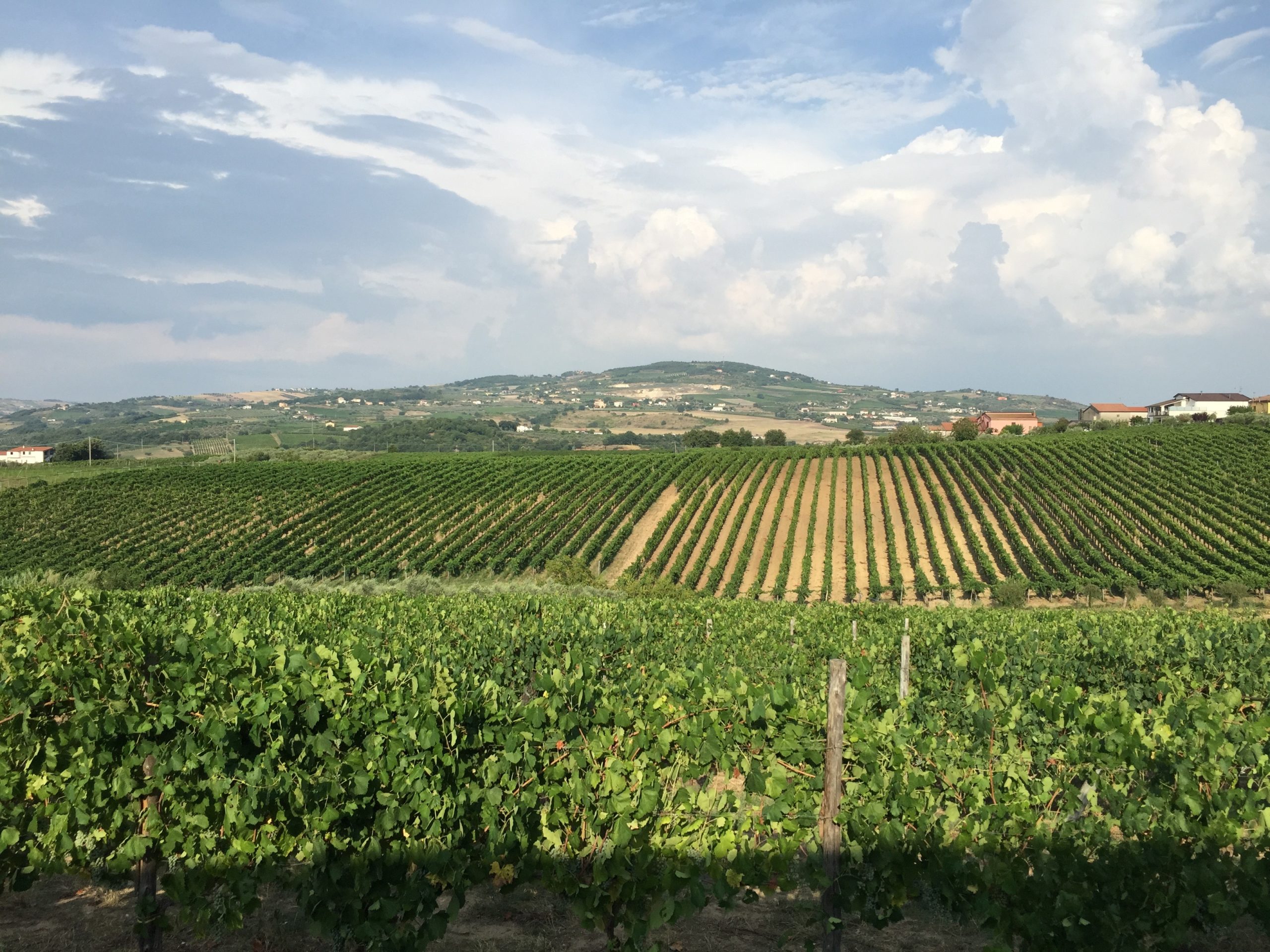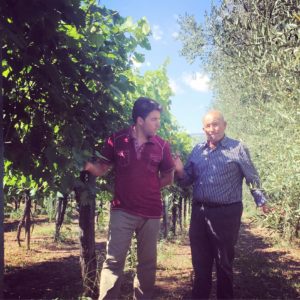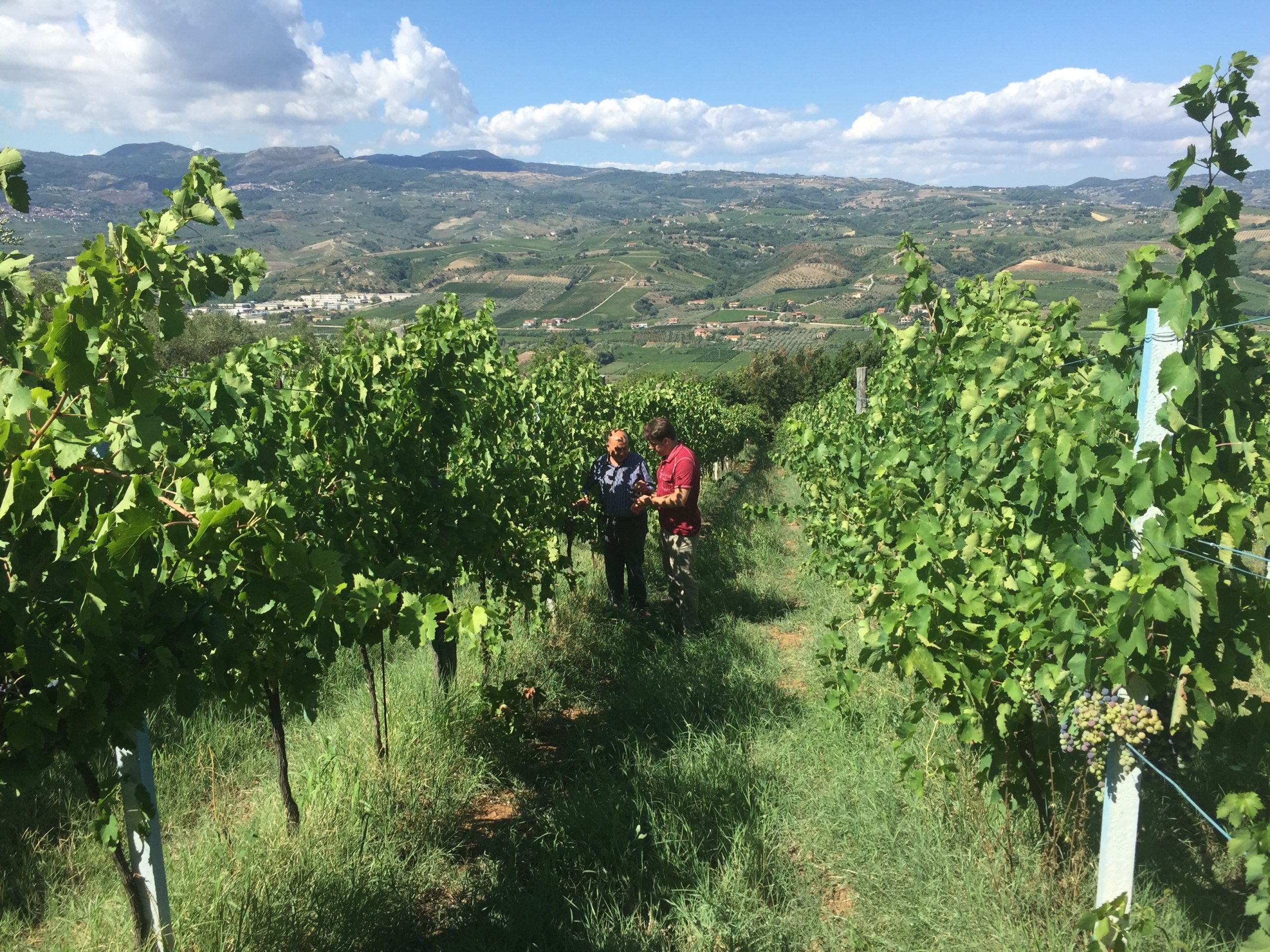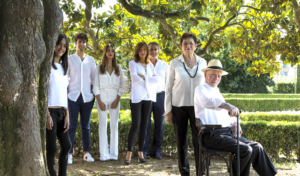Just got back from another trip in South Italy and wanted to share a little bit about what I learned. Traveling the wine trails of Italy is time consuming and sometimes disappointing if I don’t find a good wine. But that’s part of the journey. This year, I spent most of my time in two regions: Campania and Puglia.
Puglia: The “Heel” Of The Italian “Boot”
Puglia is a monstrous wine region in Italy. It has 29 different DOC classifications, not counting the DOCG’s and IGT’s.
There are 13 indigenous varietals in Puglia in commercial quantities. Lately I’ve been very interested in a white varietal called Bombino Bianco which is found mostly in Daunia, the northern section of Puglia.
This is a high-acidity, medium body white wine. The best ones exhibit notes of peach, citrus, white flowers, and stone. I visited several wineries to find the best quality-price ratio I could find. Mostly small producers are cultivating Bombino so it makes it sort of a challenge to find quality at a price that we can make affordable to the average wine consumer. I’m currently working on a deal with a winery that I believe will deliver a novel wine at a great deal.

Nero di Troia
Nero di Troia is one of Puglia’s great red varietals. The range of flavors, body, and nuance is very wide with this varietal. I find that the industrial producers are attempting to make a Cab-style wine with this ancient varietal but they’re making a big mistake. It’s important to let the grape evolve in the cellar in its own unique way. The dominance of dark and oaky versions unfortunately have not made an authentic impression for me.
It’s an ancient grape with great complexity potential under the supervision of a skilled enologist. From my experience, the best Nero di Troia is found in the northern part of Puglia, in the Daunia section. The best versions of Nero di Troia should have a silky mouthfeel that feels like a full body in terms of texture but medium in terms of weight in the mouth. If aged in steel, Nero di Troia will be a transparent light red with a watery rim at times. If harvested at the right moment, the final product will have a more complex fruit profile exhibiting red cherries, raspberries and red peach.
Negroamaro
This red varietal has become very popular in Italy, partly because there is a music act named after it. Negroamaro has been exported for years to France to be used as a “smoothing” out varietal in their blends. The French might not admit to this! When harvested at the time of optimum ripeness, it produces very smooth and soft wines with dark fruits. If the grape is picked too early, you’ll get a mediocre wine with sour notes and pure boredom!
Negroamaro is also an excellent blending grape because its personality never dominates the grapes in the blend. It adapts well in blends and creates a softer wine. Its best blending partner is the Primitivo grape. They’ve both been growing in the Salento peninsula for thousands of years. The best Negroamaro is found in the Salento section, the bottom part of the “heel.”
These were just some of my observations on the wine trail of Southern Italy. It’s such a tiny corner of the wine world as whole, but it’s a wine cosmos of its own. The next hidden gem is waiting to be found.






